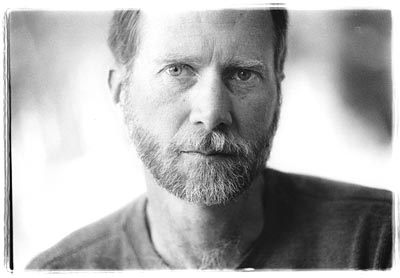The unbearable lightness (and length) of John Luther Adams’ music

“One of the musicians asked me today, ‘What does this piece mean?,’” said John Luther Adams to the audience about to hear his 1998 work In the White Silence. “And I said, ‘I would be more interested in what you think it means.’”
Therein lies the strength or weakness of Adams as a composer: the music is vacuous enough that it can mean just about anything an imaginative listener chooses to bring to it. Sitting through an epic double-bill of Adams’ music at the Museum of Contemporary Art Saturday night, the music did not seem to engage so much as disengage.
In the White Silence is, according to Adams, a piece “about” the Alaskan wilderness that has been his home since the late 1970s. The use of the term “white” in a piece of contemporary music might also suggest white noise, frequencies too overloaded for any specific pitches to be discernible, much like a cat hiss or the static between pre-digital television or radio channels. But not here.
A chamber orchestra of strings, percussion and harp made up of eight players from International Contemporary Ensemble (ICE) were augmented by ten student string players from Northwestern University, conducted by Steven Schick.
That configuration basically sustained long Ivesian chords suspended in space, punctuated by tremolos across tuned percussion and occasional slow-moving harp or celesta arpeggios, sometimes spinning off into sustained arpeggio bits taken up by the ICE string players—but never leaving the gravitational pull of Adams’ unabashed banalatonic style. If this is the music that represents Adams’ portrait of his Alaskan landscape, it must be a very dull view. At least Sarah Palin can see Russia from her house.
For every listener held in hypnotic trance by the static soundscapes tediously tracing the same diatonic material over and over again with only variations of musical punctuation, there were listeners who became so frustrated with the repetition that they bolted for the exit at various points along the way of the nearly ninety-minute piece. Some left almost immediately, others not very quietly or politely, including one skeptic who was escorted out of the theater by security. John Cage would have been proud.
To add to the surreal nature of the evening, another listener started talking loudly well into In the White Silence, and at first seemed to be another heckler. Soon Chicago Fire Department paramedics in full gear entered the theater from the side and removed a woman on a stretcher while audience members in the row discreetly moved aside. The music continued and never ceased doing whatever it was doing. And doing and doing.
For an additional $5, hardy concertgoers had the option to stay and experience another Adams’ opus, his 2002 The Mathematics of Resonant Bodies, a solo percussion piece that had Steven Schick slowly move across the stage to various percussion stations and bang away on average about ten to fifteen minutes each, sometimes with electronic transformations.
The first station was four snare drums given drum rolls played straight with occasional changes of dynamics and of the varying sonorities of the drums themselves. A long silence where Schick stopped, muted each snare and then walked over to the second station took him to a full-size bass drum, which he rolled like constant thunder, with transformations that emphasized partials and overtones. This was followed by a battery of various-sized triangles that were exploited in a similar fashion — at times with an almost Hendrix-like feedback — and proved the most interesting music of the long evening.
A drum kit variation with tom toms and a trap set size bass drum controlled by foot pedal and a full sized bass drum gave Schick his rock concert In-A-Gadda-Da-Vida moment, which was followed by a sonorous exploitation of a hand-cranked siren going slowly up and down. An extended cymbal section followed before a reprise of the snare drum station, back where the piece began some 75 minutes earlier.
Posted in Performances




